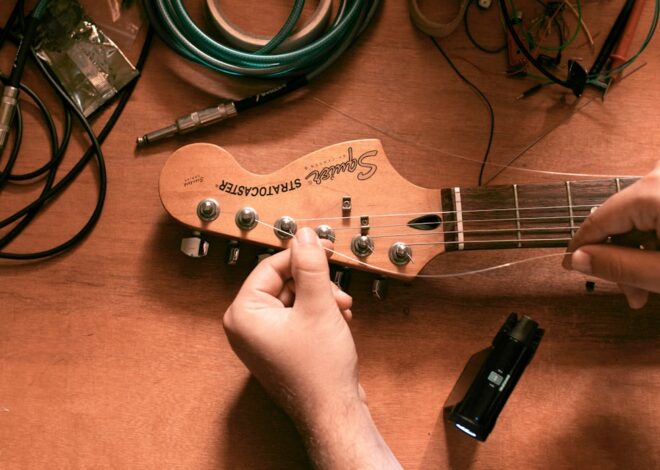
Revving Up: The Art of Cars Drawing
Car drawing is a popular form of art that allows artists to express their love for automobiles and showcase their creativity. Whether you are a car enthusiast or an aspiring artist, drawing cars can be a fun and rewarding activity. From classic vintage cars to modern sports cars, there are endless possibilities when it comes to car drawing. This art form allows artists to capture the sleek lines, curves, and details of cars, making it a challenging yet fulfilling endeavor.
Car drawing is not only a way to showcase your artistic skills, but it also allows you to explore different styles and techniques. Whether you prefer realistic drawings or more abstract interpretations, car drawing offers a wide range of creative possibilities. In this article, we will explore the tools and materials needed for car drawing, as well as the techniques and tips for creating stunning car drawings. We will also delve into the world of famous artists who have made a name for themselves through their car drawings, and how car drawing can be a form of self-expression and creativity.
Key Takeaways
- Car drawing is a popular form of art that allows artists to express their creativity and passion for automobiles.
- The tools and materials needed for car drawing include pencils, erasers, rulers, and specialized drawing paper.
- Understanding perspective and proportions is crucial in car drawing to accurately depict the shape and size of the vehicle.
- There are various styles and techniques in car drawing, such as sketching, shading, and using different mediums like ink or digital tools.
- Adding realism and detail to car drawings can be achieved through careful observation of light, shadow, and texture, as well as attention to small details like reflections and interior features.
Tools and Materials for Car Drawing
Before you start drawing cars, it’s important to have the right tools and materials at your disposal. The most essential tool for car drawing is a good quality set of pencils. Pencils come in various grades, ranging from 9H (hardest) to 9B (softest). For car drawing, it’s best to have a range of pencils from 2H to 6B, as this will allow you to create both light and dark lines with varying degrees of hardness. In addition to pencils, you will also need a good quality eraser to correct any mistakes and achieve clean, precise lines.
Another important tool for car drawing is paper. While any type of paper can be used for drawing, it’s best to use a smooth, heavyweight paper that can withstand multiple erasures and detailed work. Bristol board or drawing paper are popular choices for car drawing due to their smooth surface and durability. Additionally, you may want to invest in a set of fine liners or markers for adding details and defining the contours of the car. These tools will help you achieve clean, crisp lines and add depth to your car drawings.
In addition to pencils, paper, and markers, having a good quality set of colored pencils or pastels can add another dimension to your car drawings. Whether you want to add color to your drawings or create dynamic shading and highlights, colored pencils and pastels can bring your car drawings to life. With the right tools and materials at your disposal, you can embark on your car drawing journey with confidence and creativity.
Understanding Perspective and Proportions in Car Drawing
One of the key elements in creating realistic and accurate car drawings is understanding perspective and proportions. Cars are three-dimensional objects, and capturing their form on a two-dimensional surface requires an understanding of perspective and proportions. When drawing cars, it’s important to consider the vanishing points, horizon line, and foreshortening to create a sense of depth and realism.
Perspective is crucial in car drawing as it determines how the car will appear on the page. Understanding one-point, two-point, and three-point perspective can help you accurately depict the shape and form of the car from different angles. By using perspective techniques, you can create the illusion of depth and dimension in your car drawings, making them more realistic and visually engaging.
Proportions are equally important in car drawing, as they dictate the overall shape and size of the car. Paying attention to the proportions of the car’s body, wheels, windows, and other details will ensure that your drawing looks accurate and true to life. Using basic geometric shapes such as cubes, cylinders, and ellipses can help you establish the correct proportions and structure of the car before adding finer details.
By mastering perspective and proportions, you can elevate your car drawings to a new level of realism and accuracy. Practice sketching cars from different angles and perspectives to hone your skills in capturing the dynamic form of automobiles on paper.
Exploring Different Styles and Techniques in Car Drawing
| Style/Technique | Description | Example |
|---|---|---|
| Realistic | Focuses on capturing the precise details and proportions of a car | An accurate representation of a specific car model |
| Cartoon | Exaggerates features and simplifies shapes for a more playful and whimsical look | A caricatured version of a car with oversized wheels and comical proportions |
| Sketch | Uses loose, gestural lines to convey the essence of a car without getting into fine details | A quick, energetic drawing capturing the basic form of a car |
| Technical Drawing | Emphasizes precision and accuracy, often used for design and engineering purposes | Annotated blueprint-style drawing showing the dimensions and specifications of a car |
Car drawing offers a wide range of styles and techniques that artists can explore to create unique and captivating artworks. Whether you prefer realistic renderings or more stylized interpretations, there are endless possibilities when it comes to drawing cars. Realistic car drawing involves capturing every detail and nuance of the car with precision and accuracy. This style often requires a keen eye for observation and a steady hand to replicate the intricate features of the car.
On the other hand, artists can also explore more expressive and stylized approaches to car drawing. This may involve exaggerating certain features of the car, using bold lines and colors, or incorporating abstract elements into the composition. Stylized car drawing allows artists to infuse their personal style and creativity into their artworks, resulting in dynamic and visually striking representations of cars.
In addition to different styles, there are various techniques that artists can use to enhance their car drawings. Cross-hatching, stippling, and blending are just a few examples of techniques that can be used to add texture, shading, and depth to car drawings. Experimenting with different techniques can help artists develop their own unique visual language and create compelling car drawings that stand out.
Whether you prefer a realistic approach or want to explore more stylized techniques, car drawing offers endless opportunities for artistic expression and experimentation. By exploring different styles and techniques, artists can push the boundaries of traditional car drawing and create innovative and captivating artworks.
Tips for Adding Realism and Detail to Car Drawings
Adding realism and detail to car drawings can elevate them from simple sketches to stunning works of art. There are several tips and techniques that artists can use to enhance the realism and detail in their car drawings. One effective way to add realism is by paying close attention to light and shadow. By carefully observing how light interacts with the surfaces of the car, artists can create depth and dimension in their drawings.
Another tip for adding realism is to focus on capturing the small details that make each car unique. Whether it’s the reflections on the windows, the texture of the tires, or the intricate design of the headlights, paying attention to these details can make a significant difference in the overall realism of the drawing. Using fine liners or markers for precise lines and adding subtle touches of color can also enhance the level of detail in the artwork.
Furthermore, studying reference photos of cars can provide valuable insights into their design and structure. By analyzing different angles and perspectives of cars, artists can gain a better understanding of their form and proportions, which can be translated into more accurate and realistic drawings. Additionally, practicing observational drawing by sketching cars from life can help artists develop their skills in capturing the nuances of real cars.
By incorporating these tips into their practice, artists can take their car drawings to new heights of realism and detail, creating artworks that captivate viewers with their lifelike qualities.
Showcasing Famous Artists and Their Car Drawings

Throughout history, many famous artists have been drawn to cars as subjects for their artworks. From classic painters to contemporary illustrators, cars have been a source of inspiration for artists across different genres and styles. One notable artist known for his iconic car drawings is Andy Warhol. The renowned pop artist created a series of silkscreen prints featuring famous cars such as the BMW M1, Mercedes-Benz 300SL Coupe, and others. Warhol’s bold use of color and graphic style brought a new perspective to car drawings, showcasing the allure of automobiles as cultural symbols.
Another artist who made a name for himself through his car drawings is Gerald Scarfe. The British illustrator is famous for his dynamic and expressive caricatures, including his satirical depictions of cars in motion. Scarfe’s energetic line work and exaggerated forms capture the speed and excitement of cars in a way that is both humorous and visually impactful.
In addition to these famous artists, there are countless contemporary illustrators and designers who have gained recognition for their exceptional car drawings. Their diverse styles and approaches demonstrate the enduring appeal of cars as subjects for artistic exploration.
Car Drawing as a Form of Self-Expression and Creativity
Car drawing goes beyond simply capturing the physical appearance of cars; it also serves as a form of self-expression and creativity for artists. For many enthusiasts, drawing cars is a way to celebrate their passion for automobiles and showcase their unique perspectives on automotive design. Whether it’s through realistic renderings or imaginative interpretations, artists can infuse their personal experiences and emotions into their car drawings.
Furthermore, car drawing allows artists to explore themes such as speed, power, freedom, and nostalgia associated with cars. By conveying these themes through their artworks, artists can evoke strong emotional responses from viewers who share similar sentiments about cars.
Moreover, car drawing provides an opportunity for artists to experiment with different styles, techniques, and mediums, allowing them to push their creative boundaries and develop their artistic voice. Whether it’s through traditional pencil drawings, digital illustrations, or mixed media artworks, artists can explore diverse approaches to car drawing that reflect their individuality.
In conclusion, car drawing offers a rich tapestry of possibilities for artists to explore their love for automobiles while honing their artistic skills. From mastering perspective and proportions to experimenting with different styles and techniques, there are endless opportunities for creative expression in the world of car drawing. Whether you’re an aspiring artist or a dedicated car enthusiast, embracing the art of drawing cars can be a fulfilling journey that celebrates both creativity and passion for automobiles.
If you’re interested in cars drawing, you might also enjoy reading about the latest trends in automotive design. Check out this article on billetsavions.com to learn about the innovative new features and technologies being incorporated into modern car designs. From sleek aerodynamics to cutting-edge infotainment systems, this article will give you a glimpse into the future of automotive design.
FAQs
What are some tips for drawing cars?
Some tips for drawing cars include studying the basic shapes of cars, practicing drawing different car models, and paying attention to details such as the wheels, headlights, and body lines.
What materials are commonly used for drawing cars?
Common materials used for drawing cars include pencils, markers, colored pencils, and digital drawing tools such as graphic tablets and software.
Are there any specific techniques for drawing cars?
Some specific techniques for drawing cars include using perspective to create a sense of depth, paying attention to proportions and symmetry, and using shading to add dimension to the drawing.
What are some popular styles for drawing cars?
Popular styles for drawing cars include realistic, cartoon, and concept art styles. Each style offers a unique approach to capturing the essence of cars in a drawing.
Can anyone learn to draw cars?
Yes, anyone can learn to draw cars with practice, patience, and dedication. Drawing cars is a skill that can be developed over time with the right techniques and guidance.


